Dust Networks LM2610 802.15.4 Time Synchronous Mesh Network Mote User Manual
Dust Networks, Inc. 802.15.4 Time Synchronous Mesh Network Mote Users Manual
Users Manual
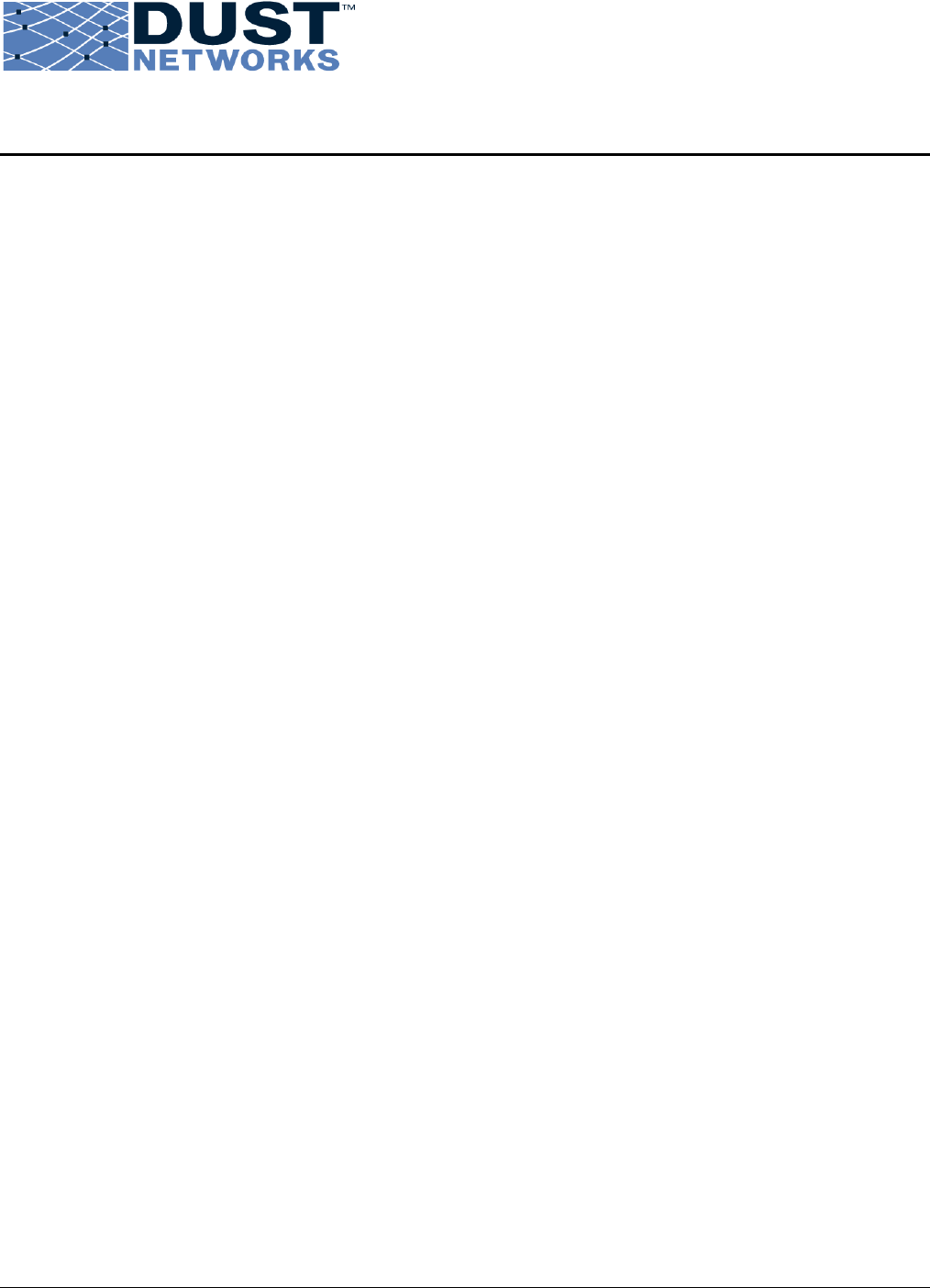
Advanced Information
LM2610 User’s Guide Dust Networks™ 1
SMARTMESH® LM2610
2.4 GHz Ultra Low-power Embedded Network Manager User’s Guide
Product Description—LM2610
The LM2610 ultra low-power embedded network manager is ideal for small, remote wireless network applications that require both motes
and the network manager to operate on battery or solar power. The LM2610 combines Dust Networks’ robust, Intelligent Networking
Platform and industry-leading low-power radio technology in an easy-to-integrate embedded subsystem. The ultra low-power LM2610 is
tailored for use in battery and solar powered gateways and controllers, and enables the deployment of low-power wireless sensor networks
that deliver proven performance in the face of harsh RF and environmental conditions, enabling unattended operation for years at a time.
Sophisticated network management algorithms deliver dynamic network optimization and intelligent routing to achieve carrier class
reliability, lower latency, and deterministic power management. Additionally, the embedded network manager offers a comprehensive
serial API to deliver rich and flexible functionality without complex coding. This API also provides full visibility and control over network
configuration, security administration, network status, and performance statistics. The network-ready ultra low-power embedded manager
enables OEMs to integrate advanced wireless sensor networking intelligence into monitoring and control solutions with low risk and rapid
time-to-market.
Key Features
Ultra-Low Power Operation
• Low power consumption enables the manager to operate
in solar or battery powered applications
• Ideal for small, remote wireless network applications
Intelligent Network Management
• Dynamic network optimization—maintains network
health and provides deterministic power management
• Intelligent routing—lowers latency, reduces network
power consumption and eliminates in-network collisions
• Enables >99.9% network reliability even in the most
challenging industrial environments
Global Market Solution
• IEEE 802.15.4-certified radio operates on 2.4 GHz global
license-free band
• Configurable radio output—meets RF emission limits for
different regions with a single product
• Modular RF certifications pending for FCC, IC, CE
Fast and Low Risk Integration
• Comprehensive APIs deliver flexible functionality without
complex coding
• Fully integrated and certified RF capabilities—simply add an
antenna

Advanced Information
2 Dust Networks™ LM2610 User’s Guide
Table of Contents
1.0 Absolute Maximum Ratings ................................................................................3
2.0 Normal Operating Conditions .............................................................................3
3.0 Electrical Specifications .....................................................................................3
3.1 Radio ................................................................................................................ 4
3.1.1 Radio Specifications ...................................................................................... 4
3.1.2 Antenna Specifications................................................................................... 5
4.0 Interfaces ..........................................................................................................5
4.1 Hardware Interfaces ............................................................................................ 5
4.1.1 3V RS232 Interface ....................................................................................... 5
4.1.2 MuP JTAG .................................................................................................... 7
4.1.3 AP SPI+ ...................................................................................................... 7
4.2 Electrical Interface .............................................................................................. 8
4.2.1 J1 Board-to-board Pin Out.............................................................................. 8
4.2.1.1 Recommended Mating Connectors ............................................................... 8
4.2.2 J2 MuP JTAG Connector ................................................................................. 8
4.2.3 J6 AP SPI+ Connector.................................................................................... 9
5.0 Mechanical Specifications.................................................................................10
5.1 LM2610 Mechanical Drawings ..............................................................................10
6.0 Regulatory and Standards Compliance .............................................................11
6.1 FCC Compliance.................................................................................................11
6.1.1 FCC Testing ................................................................................................11
6.1.2 FCC-approved Antennas................................................................................12
6.1.3 OEM Labeling Requirements ..........................................................................12
6.2 IC Compliance ...................................................................................................12
6.2.1 IC Testing...................................................................................................12
6.2.2 IC-approved Antennas ..................................................................................12
6.2.3 OEM Labeling Requirements ..........................................................................12
6.3 CE Compliance ..................................................................................................13
6.3.1 Declaration of Conformity .............................................................................13
6.3.2 European Compliance ...................................................................................13
6.3.3 OEM Labeling Requirements ..........................................................................13
6.3.4 Restrictions.................................................................................................13
6.4 RoHS Compliance...............................................................................................13
6.5 Industrial Environment Operation .........................................................................13
7.0 Related Documentation ....................................................................................14
8.0 Ordering Information .......................................................................................14
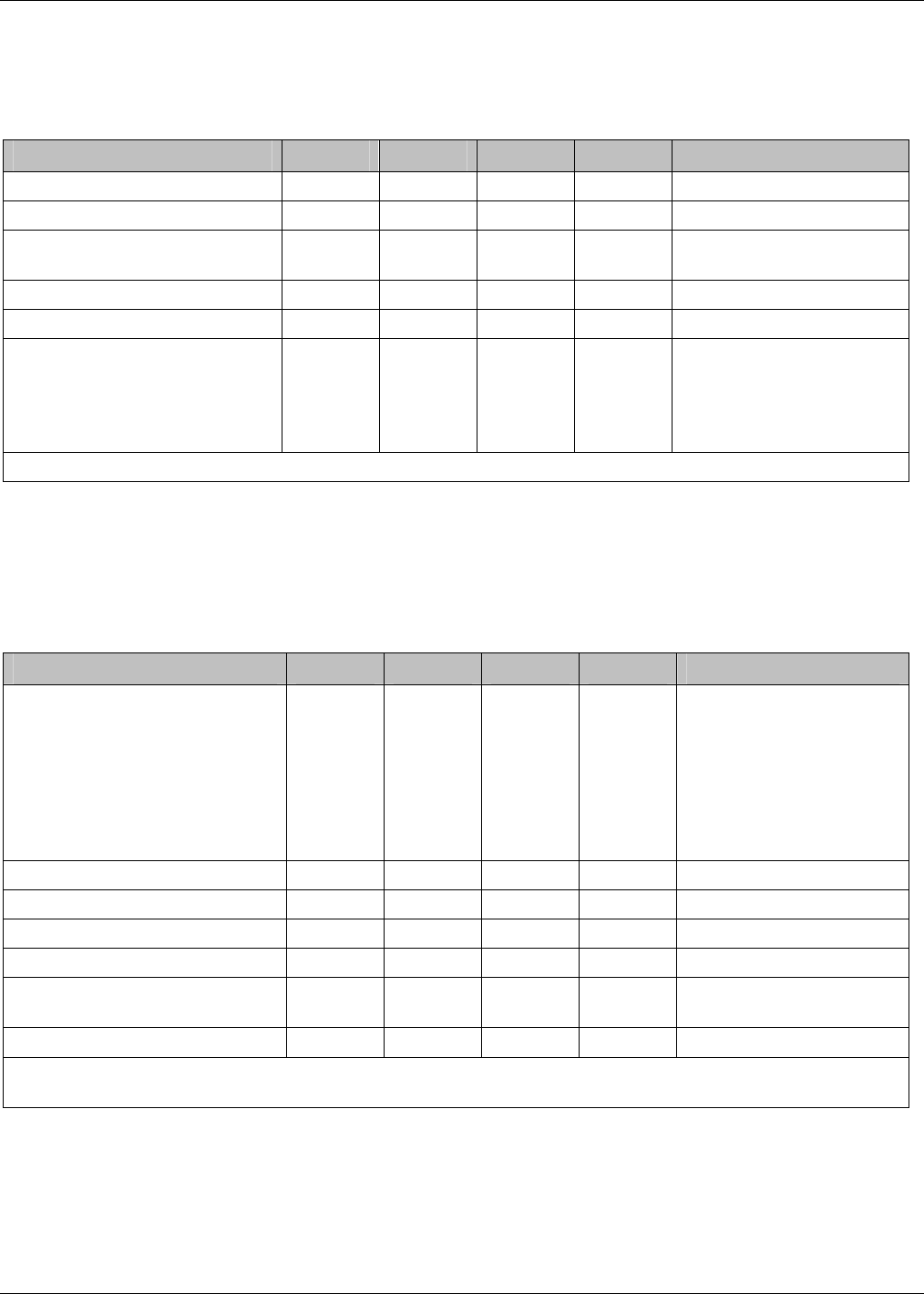
Advanced Information
LM2610 User’s Guide Dust Networks™ 3
1.0 Absolute Maximum Ratings
The absolute maximum ratings shown below should not be violated under any circumstances. Permanent damage to the
device may be caused by exceeding one or more of these parameters.
Table 1 Absolute Maximum Ratings
Parameter Min Typ Max Units Comments
Supply voltage –0.3 3.6 V
Voltage on Input Pins –0.3 3.6 V
Input RF level 10 dBm Input power at antenna
connector
Storage temperature range –40 +85 °C
VSWR of antenna 3:1
ESD protection
Antenna connector ±250 V HBM
All other connectors ±TBD kV HBM
±TBD V CDM
All voltages are referenced to VSS
Caution! This is an ESD sensitive device. Use proper ESD handling procedures when working with the device to prevent
permanent damage.
2.0 Normal Operating Conditions
Table 2 Normal Operating Conditions
Parameter Min Typ Max Units Comments
Operational supply voltage
range (between VDD and VSS)
3.0 3.3 3.6 V
This includes noise and
load regulation. During
power on, it is essential
that the maximum VDD
rise time defined in
section Error! Reference
source not found. is
met.
Voltage supply noise 100 mVp-p 50 Hz–50 MHz
Peak current TBD mA
Average current TBD mA +3.3V, 25 °C
Operating temperature range –40 +85 °C
Maximum allowed temperature
ramp during operation
8 °C/min –40 °C to +85 °C
Operating relative humidity 10 95 % RH Non-condensing
The specifications listed are for the power supply connected to VDD and VSS and apply over the operating
temperature range unless otherwise specified.
3.0 Electrical Specifications
I/O specifications are given below for each I/O level type given in the board-to-board connector tables in sections 4.1 and
4.2.1. Unless otherwise noted, supply voltage is 3.3 V and temperature range is –40 °C to +85 °C.
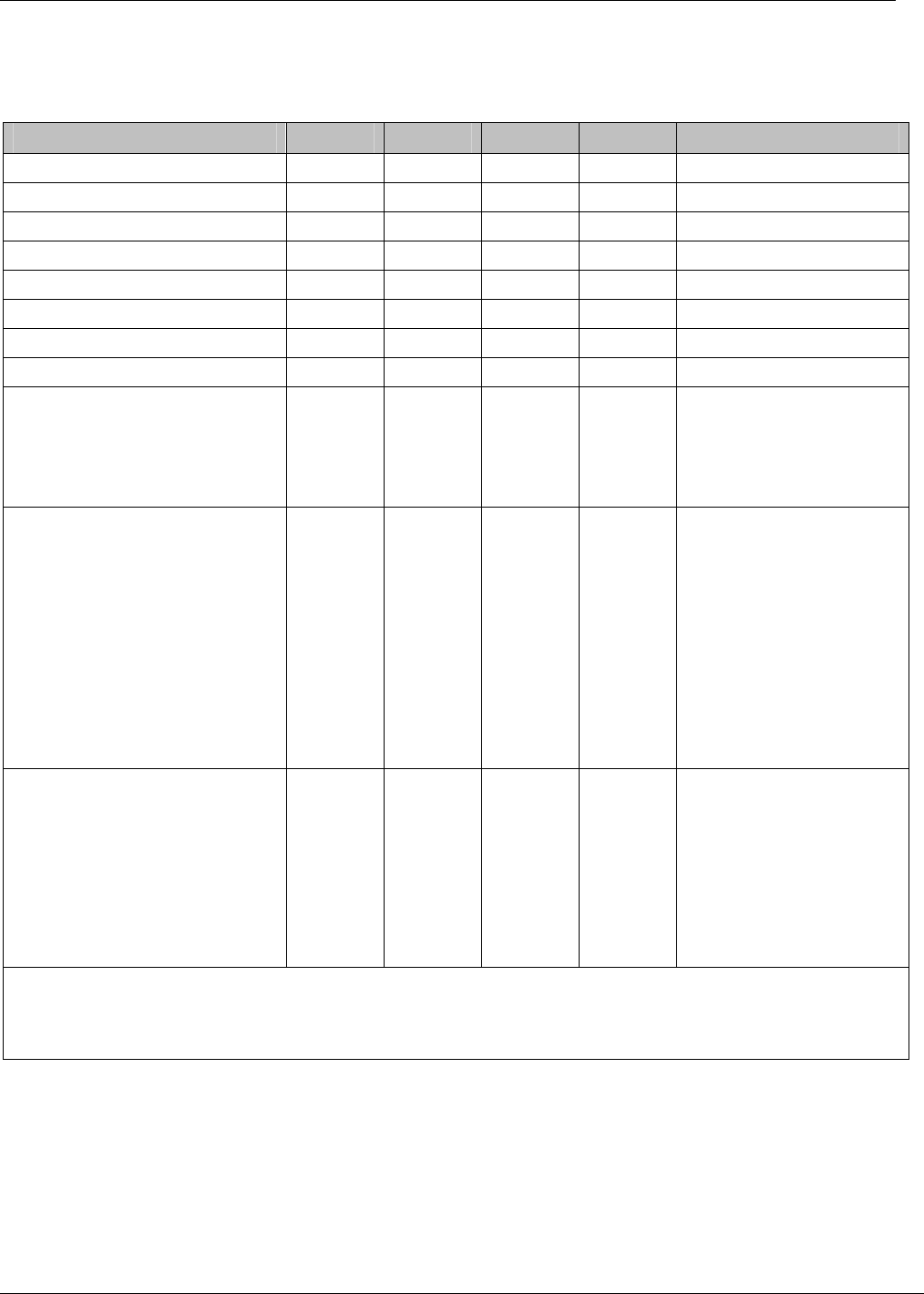
Advanced Information
4 Dust Networks™ LM2610 User’s Guide
3.1 Radio
3.1.1 Radio Specifications
Table 3 Radio Specifications
Parameter Min Typ Max Units Comments
Frequency band 2.4000 2.4835 GHz
Number of channels 15
Channel separation 5 MHz
Occupied channel bandwidth 2.7 MHz At –20 dBc
Frequency accuracy –40 +40 ppm
Modulation IEEE 802.15.4 DSSS
Raw data rate 250 Kbps
Receiver operating input level 0 dBm
Receiver sensitivity TBD dBm
At 50% PER, VDD = 3 V,
25 °C
TBD dBm
At 1% PER, VDD = 3 V,
25 °C, (inferred by 50%
PER measurement)
Output power, conducted
Power amplifier enabled:
At 25 °C +8 dBm
Power amplifier disabled:
At 25 °C –2 dBm
Range*
Power amplifier enabled:
Indoor 100 m
Outdoor 300 m
Power amplifier disabled:
Indoor 25 m
25 °C, 50% RH, 1 meter
above ground, +2 dBi
omnidirectional antenna
Outdoor 200 m
* Actual RF range performance is subject to a number of installation-specific variables including, but not
restricted to ambient temperature, relative humidity, presence of active interference sources, line-of-sight
obstacles, near-presence of objects (for example, trees, walls, signage, and so on) that may induce
multipath fading. As a result, actual performance varies for each instance.
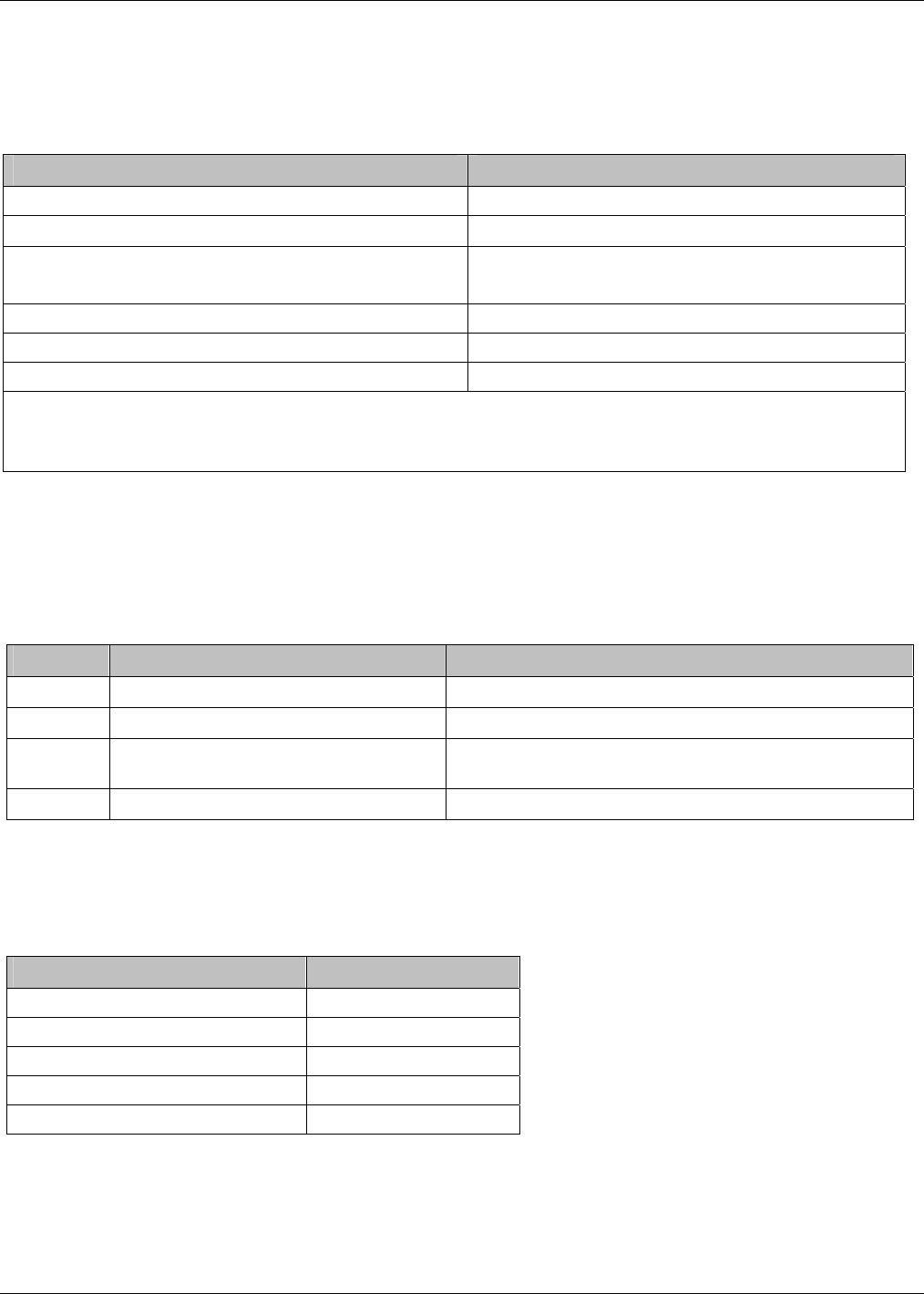
Advanced Information
LM2610 User’s Guide Dust Networks™ 5
3.1.2 Antenna Specifications
A MMCX-compatible jack receptacle is provided on board for the antenna connection. For antenna location, refer to the
mechanical drawing in section 5.1. The antenna must meet specifications in Table 4. For a list of antennae pre-approved for
RF certification, see section 6.1.2.
Table 4 Antenna Specifications
Parameter Value
Frequency range 2.4–2.4835 GHz
Impedance 50 Ω
Gain
LM2610-1 +2 dBi maximum
Pattern Omni-directional
Maximum VSWR 3:1
Connector MMCX*
* The LM2610 can accommodate the following RF mating connectors:
• MMCX straight connector such as Johnson 135-3402-001, or equivalent
• MMCX right angle connector such as Tyco 1408149-1, or equivalent
When the LM2610 is placed inside an enclosure, the antenna should be mounted such that the radiating portion of the
antenna protrudes from the enclosure, and connected using a MMCX connector on a coaxial cable. For optimum
performance, allow the antenna to be positioned vertically when installed.
4.0 Interfaces
4.1 Hardware Interfaces
Table 5 Hardware Interface Summary
Port Description Pins
Serial UART 6-pin RTS_T
¯¯¯¯¯¯, CTS_T
¯¯¯¯¯¯, TX, RTS_R
¯¯¯¯¯¯, CTS_R
¯¯¯¯¯¯, RX, VSS
Reset Active low reset input RST
¯¯¯¯
MuP JTAG Programming & development of
LM2610 code
TMS
¯¯¯¯, TCK TDI, TDO, VSS
AP SPI+ Programming of the AP FLASH_P_EN
¯¯¯¯¯¯¯¯¯¯¯¯, SCK, MOSI, MISO, SPI_CS
¯¯¯¯¯¯¯, VDD, VSS
4.1.1 3V RS232 Interface
The serial interface is designed for embedded integration with controllers. This serial interface provides programmatic access
for configuration, management, and data access to the LM2610. The port is a 6-pin flow-controlled LVTTL (3.3 V) serial
interface accessible through the board-to-board connector.
Table 6 Serial Parameters
Parameter Value
Bit rate 115200
Parity N
Data bits 8
Stop bit 1
Flow control Hardware handshake
Figure 1 illustrates the process that the LM2610 uses to transmit serial data:
1. The LM2610 ensures the interpacket_delay time has passed since the last transmission.
2. The LM2610 drives RTS_T
¯¯¯¯¯ to active, waits for a falling edge on CTS_T
¯¯¯¯¯ . Timeout is defined as ack_delay, and is
long enough to handle the worst-case response.
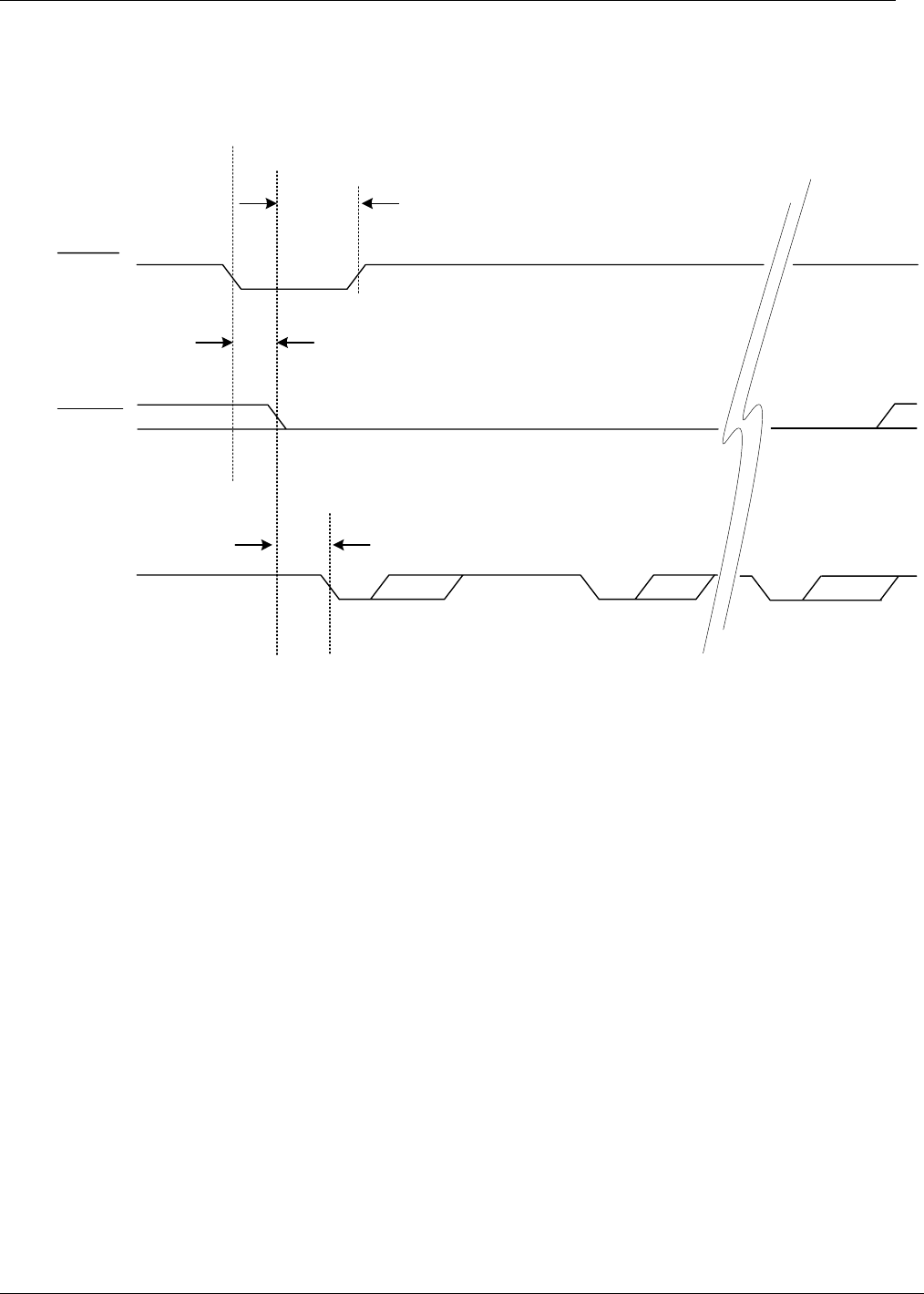
Advanced Information
6 Dust Networks™ LM2610 User’s Guide
3. If the LM2610 times out before the CTS_T
¯¯¯¯¯ becomes active, the LM2610 restores RTS_T
¯¯¯¯¯ to inactive and drops the
packet.
4. If CTS_T
¯¯¯¯¯ is active, the LM2610 transmits the packet.
5. RTS_T
¯¯¯¯¯ is restored to inactive by the LM2610 after the ack_delay timeout has expired.
tCTS_T to RTS_T
tRTS_T to CTS_T
TX 0x7EByte 00x7E
tCTS_T to TX
CTS_T
RTS_T
Figure 1 Packet Transmission from LM2610
Figure 2 illustrates the process that the LM2610 uses to receive serial data:
1. The Customer Premise Equipment (CPE), ensures the interpacket_delay time has passed since the last transmission.
2. The CPE drives RTS_R
¯¯¯¯¯ to active, waits for a falling edge on CTS_R
¯¯¯¯¯ . Timeout is defined as ack_delay, and is long
enough to handle the worst-case response.
3. If the CPE times out before the CTS_R
¯¯¯¯¯ becomes active, the CPE restores RTS_R
¯¯¯¯¯ to inactive and drops the packet.
4. If CTS_R
¯¯¯¯¯ is active, then the CPE transmits the packet.
5. RTS_R
¯¯¯¯¯ is restored to inactive by the CPE after the ack_delay timeout has expired.
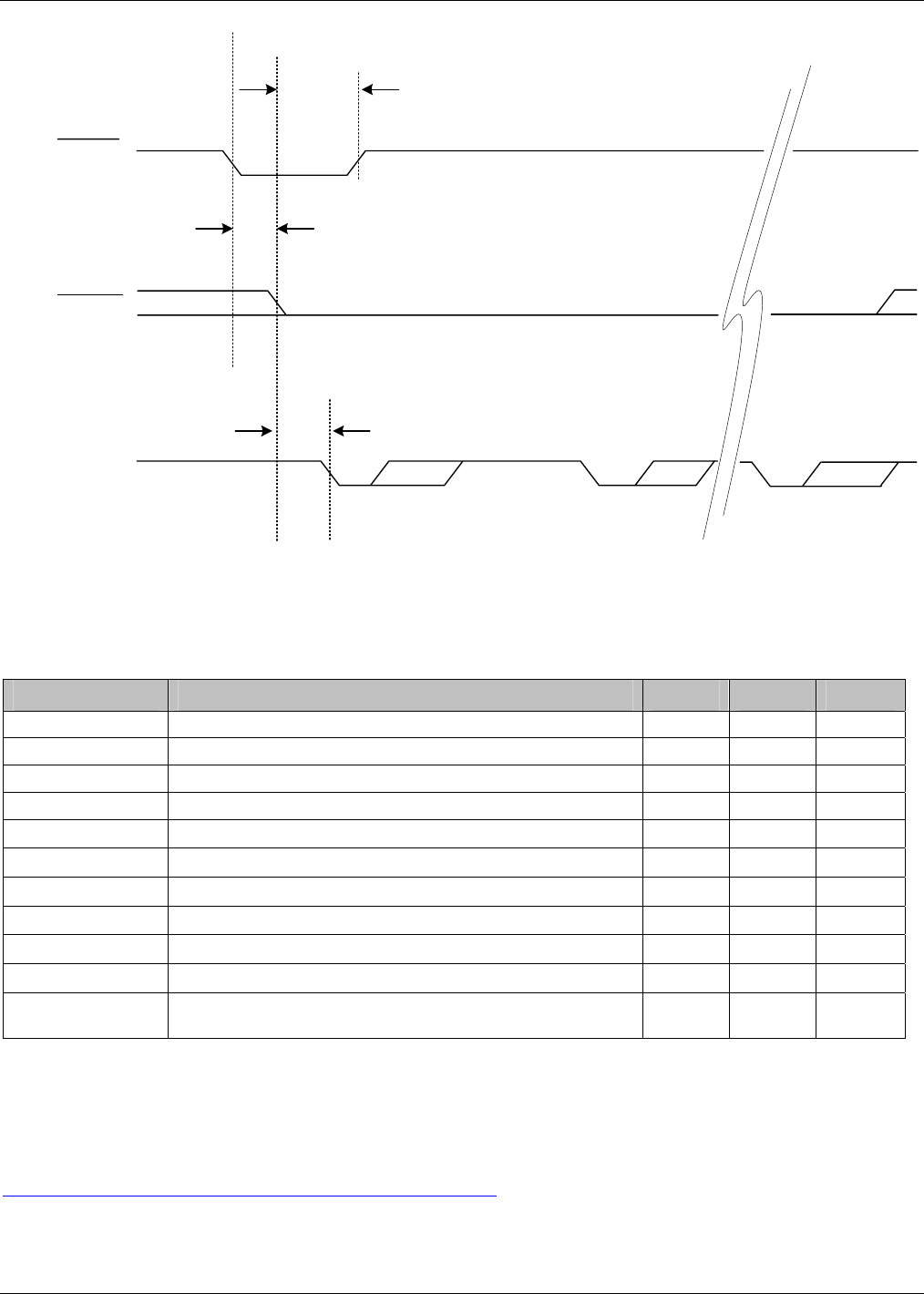
Advanced Information
LM2610 User’s Guide Dust Networks™ 7
tCTS_R to RTS_R
tRTS_R to CTS_R
RX 0x7EByte 00x7E
tCTS_R to RX
CTS_R
RTS_R
Figure 2 Packet Transmission to LM2610
Table 7 UART Timing Values
Variable Description Min Max Units
tRX_BAUD Deviation from baud rate -2 +2 %
tRX_STOP Number of stop bits (115.2 kbps) 1 bit period
tTX_BAUD Deviation from baud rate -1 +1 %
tTX_STOP Number of stop bits 1 bit period
tCTS_R to RTS_R Assertion of CTS_R
¯¯¯¯¯ to negation of RTS_R
¯¯¯¯¯ 0 10 ms
tRTS_R to CTS_R Assertion of RTS_R
¯¯¯¯¯ to assertion of CTS_R
¯¯¯¯¯ 22 ms
tCTS_R to RX Assertion of CTS_R
¯¯¯¯¯ to start of byte 0 10 ms
tCTS_T to RTS_T Assertion of CTS_T
¯¯¯¯¯ to negation of RTS_T
¯¯¯¯¯ 0 10 ms
tRTS_T to CTS_T Assertion of RTS_T
¯¯¯¯¯ to assertion of CTS_T
¯¯¯¯¯ 22 ms
tCTS_T to TX Assertion of CTS_T
¯¯¯¯¯ to start of byte 0 10 ms
tinterpacket_delay The sender of an HDLC packet must wait at least this amount
of time before sending another packet
20 ms
4.1.2 MuP JTAG
This interface can be used for programming the manager micro-processor (MuP) code image before an LM2610 is installed.
The LM2610 J3 connector and pinout is compatible with the AT91SAM-ICE JTAG emulator, as described in
http://www.atmel.com/dyn/resources/prod_documents/doc6206.pdf.
4.1.3 AP SPI+
This interface can be used for programming the LM2610 before it is installed. This interface is described in “Design for
Manufacture” in the 040-0051DN2510 Integration Guide, and is implemented on the LM2610 J4 connector.
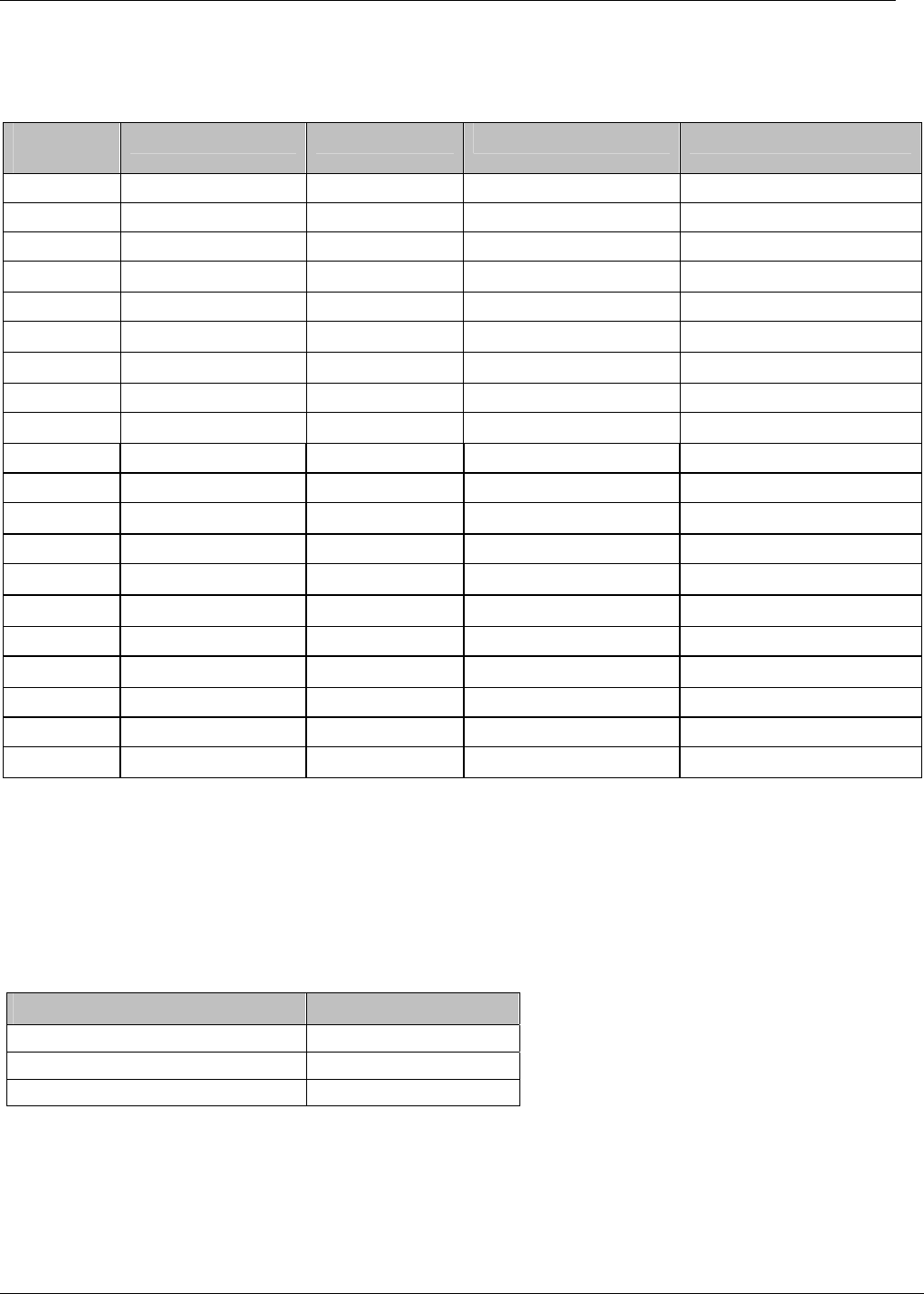
Advanced Information
8 Dust Networks™ LM2610 User’s Guide
4.2 Electrical Interface
4.2.1 J1 Board-to-board Pin Out
Table 8 J1 Board-to-board Connector
Pin
Number
Pin Name I/O Direction I/O Type Comment
1 VDD In 3.3 V ± 0.3V
2 NC - Do Not Connect Reserved
3 VSS -
4 RTS_R
¯¯¯¯¯¯ In 2
5 TX Out 4
6 CTS_T
¯¯¯¯¯¯ In 2
7 RTS_T
¯¯¯¯¯¯ Out 2
8 VSS -
9 CTS_R
¯¯¯¯¯¯ Out 2
10 RX In 2
11 VSS -
12 RTS_A
¯¯¯¯¯¯ Out 2 Reserved
13 TX_A Out 2 Reserved
14 CTS_A
¯¯¯¯¯¯ In** 2 Reserved
15 RTS_B
¯¯¯¯¯¯ In** 2 Reserved
16 VSS -
17 CTS_B
¯¯¯¯¯¯ Out 2 Reserved
18 RX_B In 2 Reserved
19 VSS -
20 RST
¯¯¯¯ In* 2 Active low MuP reset
*The RST
¯¯¯ input pin is internally pulled up. When driven low, the LM2610 is hardware reset until the signal is de-asserted.
Refer to section Error! Reference source not found. for timing requirements on the RST
¯¯¯ pin.
** These pins are internally pulled up.
4.2.1.1 Recommended Mating Connectors
The LM2610’s J1 connector is FCIConnect’s Rib-Cage connectors for reliability in high vibration environments (87024-
610TRLF). The mating connector options for this connector are shown in the table below.
Table 9 Recommended Mating Connectors
Connector Mated Height (mm)
FCI 87409-110LF 5.74
FCI 90098-110LF 7.57
FCI 73547-110LF 9.25
4.2.2 J2 MuP JTAG Connector
The MuP JTAG connector is provided as the mechanism for loading the MuP software in production. The interface is
designed to be compatible with a programming solution provided by IAR Systems.
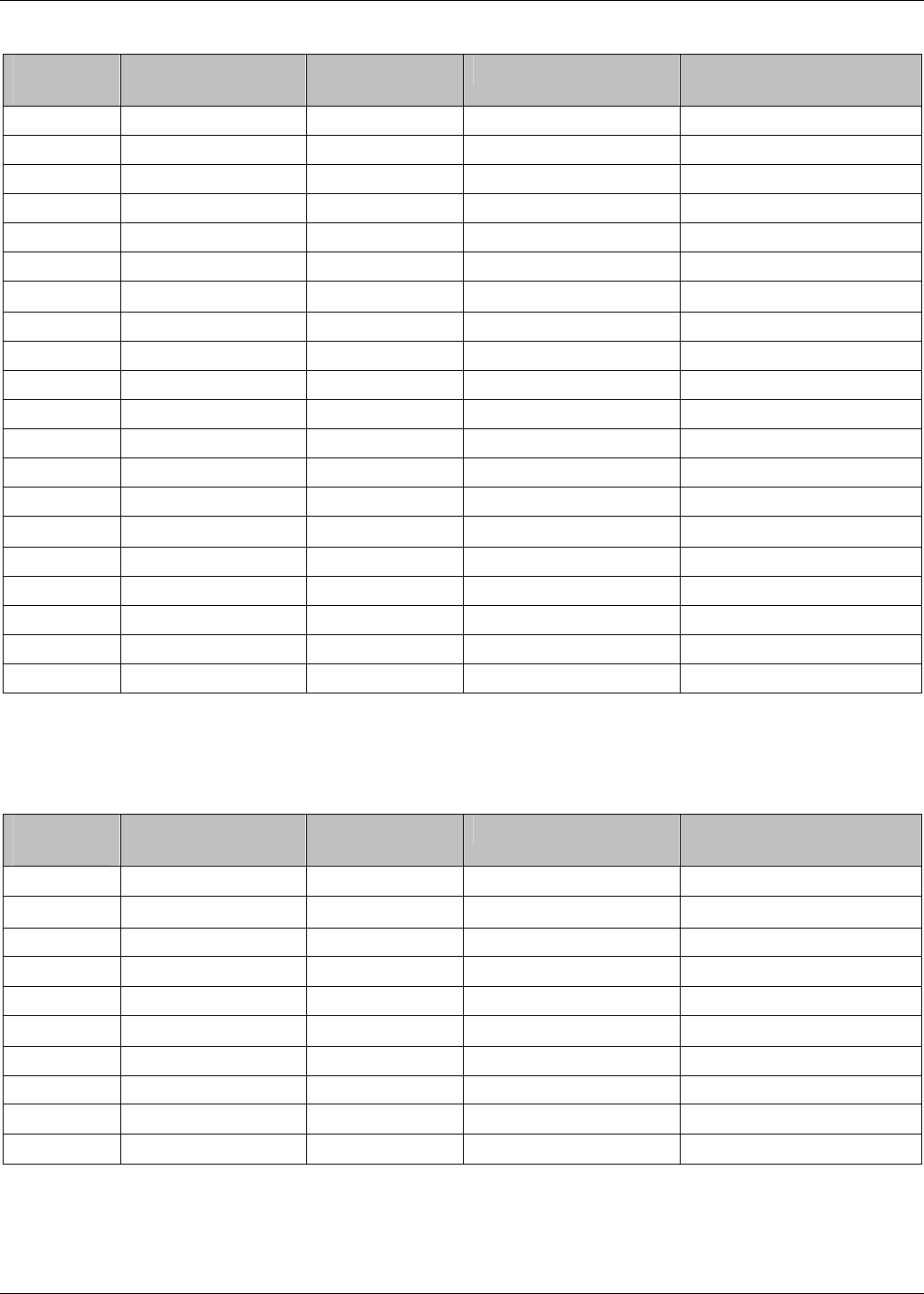
Advanced Information
LM2610 User’s Guide Dust Networks™ 9
Table 10 J2 MuP JTAG Connector
Pin
Number
Pin Name I/O Direction I/O Type Comment
1 VDD In 3.3 V ± 0.3V Supply
2 VDD In 3.3 V ± 0.3V Supply
3 Logic 1 Out 3.3V ± 0.3V
4 VSS -
5 TDI - 2 JTAG test data in
6 VSS -
7 TMS
¯¯¯¯ - 2 JTAG test mode select
8 VSS -
9 TCK - 2 JTAG test clock
10 VSS -
11 TCK* - 2 JTAG test clock
12 VSS -
13 TDO - 2 JTAG test data out
14 VSS -
15 RST
¯¯¯¯ In 2 Active low MuP reset
16 VSS -
17 VSS -
18 VSS -
19 VSS -
20 VSS -
4.2.3 J6 AP SPI+ Connector
The AP SPI+ connector is provided as the mechanism for loading the AP software in production.
Table 11 J6 AP SPI+ Connector
Pin
Number
Pin Name I/O Direction I/O Level Comment
1 SPI_CS
¯¯¯¯¯¯¯ In* 3 SPI chip select
2 FLASH_P_EN
¯¯¯¯¯¯¯¯¯¯¯¯ In* 1 SPI flash program enable
3 SCK In* 3 Serial clock
4 MOSI In* 3 Serial data in
5 MISO Out 3 Serial data out
6 AP_RST
¯¯¯¯¯¯¯ In 1 Access point reset
7 VDD In 3.3 V ± 0.3V Supply
8 VSS -
9 NC - Reserved
10 RST
¯¯¯¯ In 2 Active low MuP reset
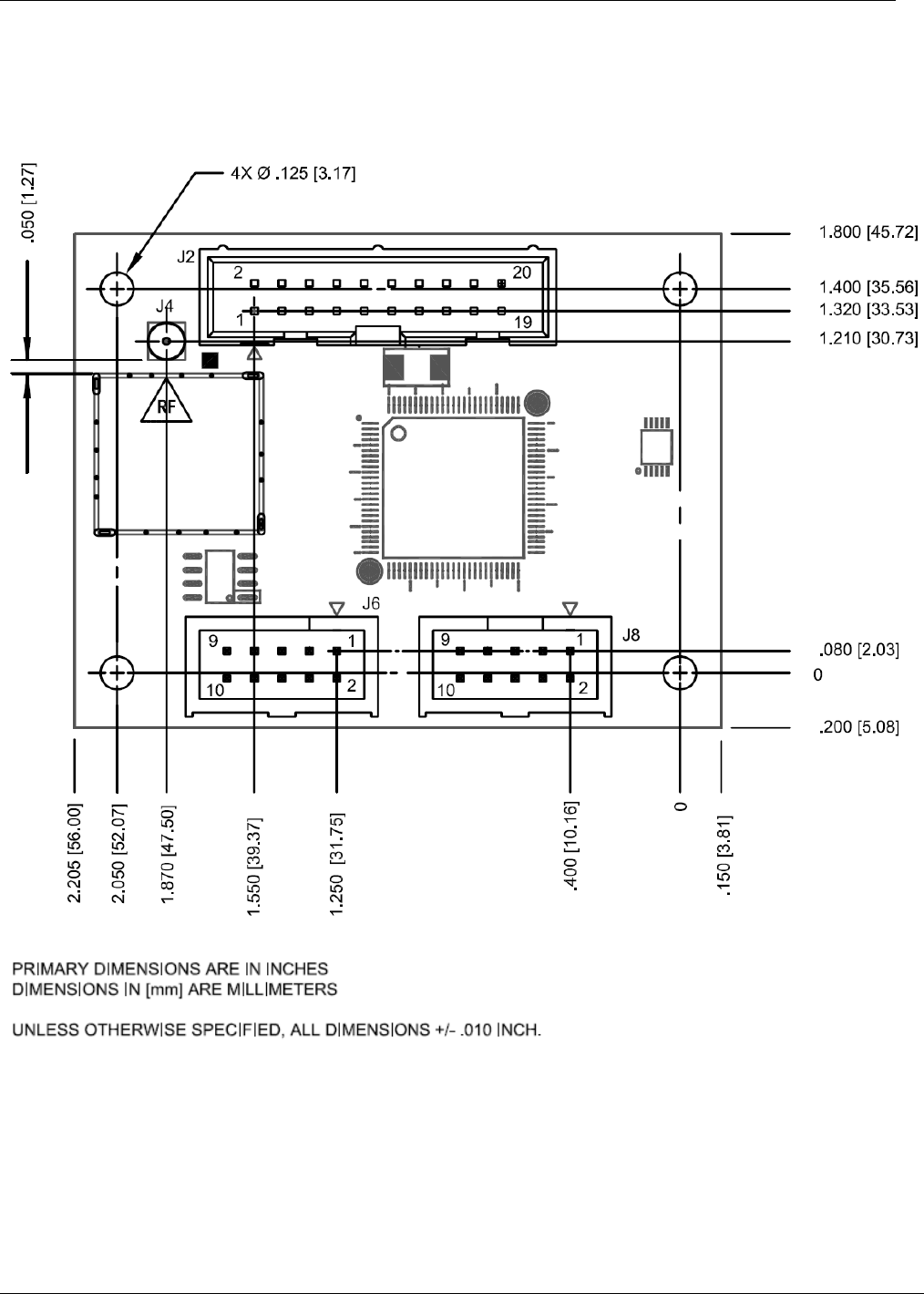
Advanced Information
10 Dust Networks™ LM2610 User’s Guide
5.0 Mechanical Specifications
5.1 LM2610 Mechanical Drawings
Figure 3 LM2610 (Top)
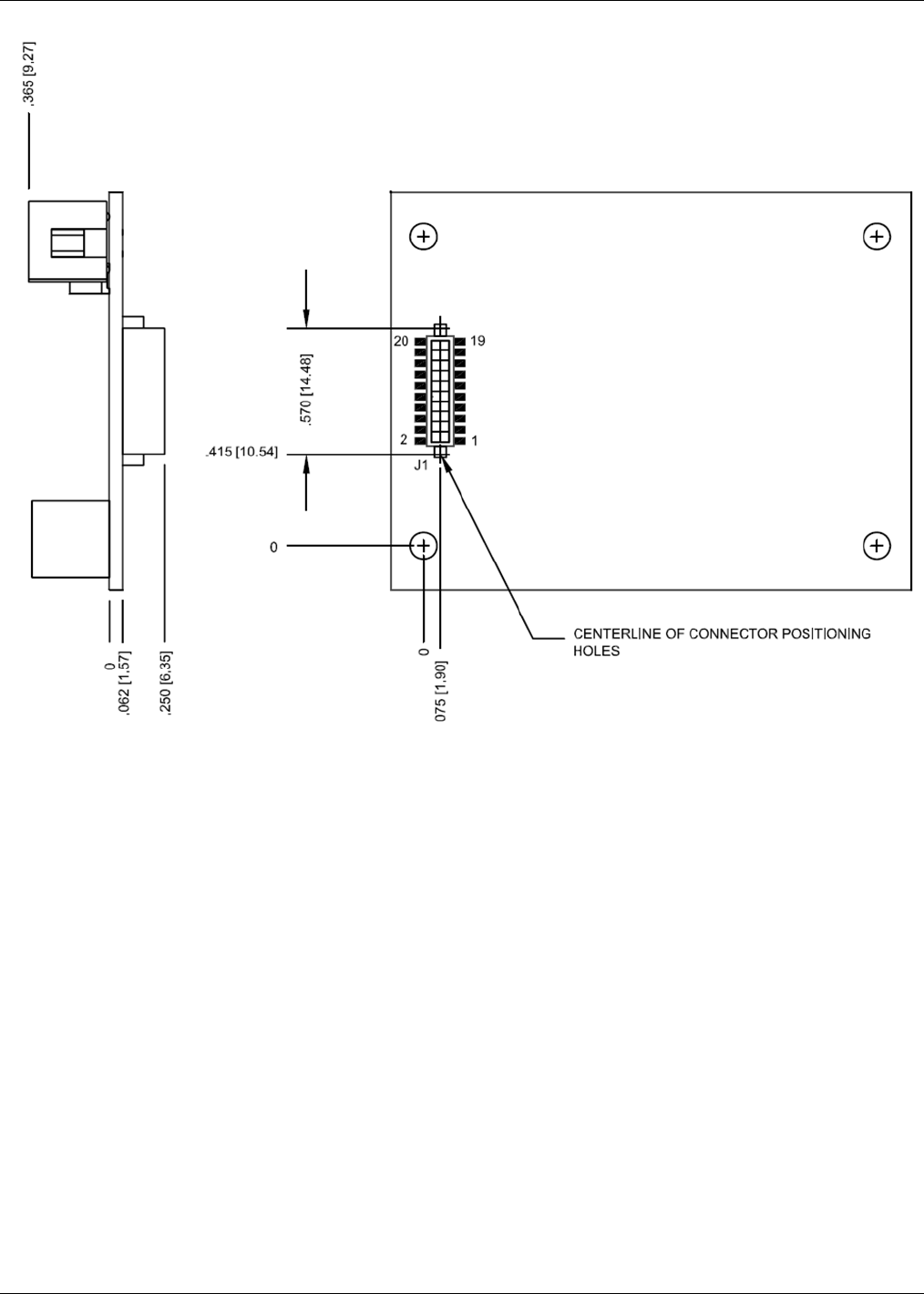
Advanced Information
LM2610 User’s Guide Dust Networks™ 11
Figure 4 LM2610 (Side and Bottom)
6.0 Regulatory and Standards Compliance
6.1 FCC Compliance
6.1.1 FCC Testing
The LM2610 Embedded Manager will be tested for compliance with Part 15.247 modular (Intentional Radiator) of the FCC
rules and regulations. In order to fulfill FCC certification requirements, products incorporating the LM2610 Embedded
Manager must comply with the following:
1. An external label must be provided on the outside of the final product enclosure specifying the FCC identifier, as
described in section 6.1.3 below.
2. The antenna must be electrically identical to the FCC-approved antenna specifications for the LM2610 as described in
6.1.2, with the exception that the gain may be lower than specified in Table 12.
3. The device integrating the LM2610 may not cause harmful interference, and must accept any interference received,
including interference that may cause undesired operation.
4. An unintentional radiator scan must be performed on the device integrating the LM2610 Embedded Manager, per FCC
rules and regulations, CFR Title 47, Part 15, Subpart B. See FCC rules for specifics on requirements for declaration of
conformity.
Any changes or modifications to the LM2610 not expressly approved by the party responsible for compliance could void the
authority to operate the equipment.
.
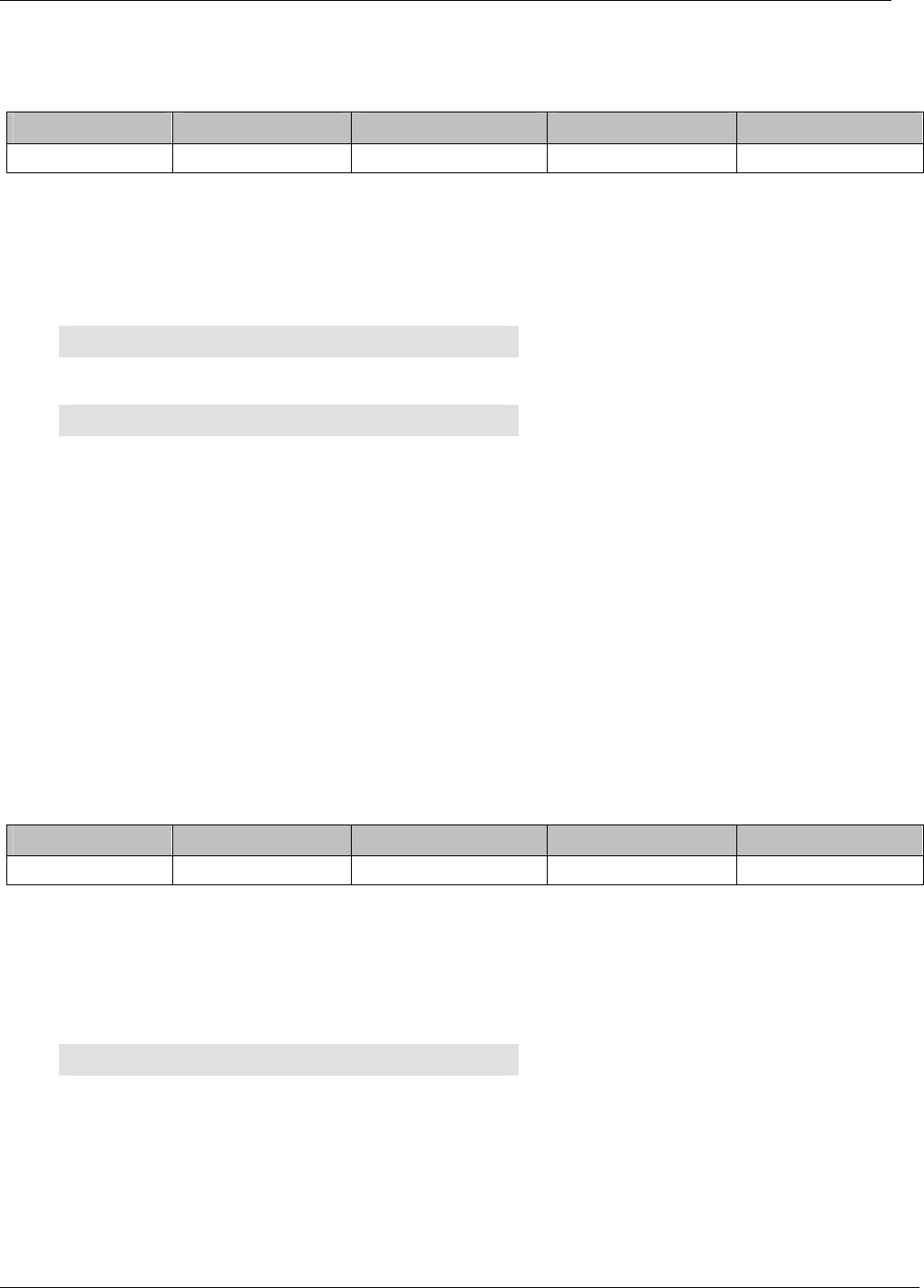
Advanced Information
12 Dust Networks™ LM2610 User’s Guide
6.1.2 FCC-approved Antennas
The following are FCC-approved antenna specifications for the LM2610.
Table 12 FCC-approved Antenna Specifications for the LM2610
Gain Pattern Polarization Frequency Connector
+2 dBi maximum Omnidirectional Vertical 2.4–2.4835 GHz MMCX
6.1.3 OEM Labeling Requirements
The Original Equipment Manufacturer (OEM) must ensure that FCC labeling requirements are met. The outside of the final
product enclosure must have a label with the following (or similar) text specifying the FCC identifier. The FCC ID and
certification code must be in Latin letters and Arabic numbers and visible without magnification.
Contains transmitter module FCC ID: SJC-LM2610
or
Contains FCC ID: SJC-LM2610
6.2 IC Compliance
6.2.1 IC Testing
The LM2610 will be certified for modular Industry Canada (IC) RSS-210 approval. The OEM is responsible for its product
to comply with IC ICES-003 and FCC Part 15, Sub. B - Unintentional Radiators. The requirements of ICES-003 are
equivalent to FCC Part 15 Sub. B and Industry Canada accepts FCC test reports or CISPR 22 test reports for compliance with
ICES-003.
6.2.2 IC-approved Antennas
The LM2610 has been designed to operate with the antenna characteristics shown in Table 13. Antennas not included in this
list or having a gain greater than shown in Table 13 are strictly prohibited for use with this device. The required antenna
impedance is 50 Ohms. To reduce potential radio interference to other users, the antenna type and its gain should be so
chosen that the equivalent isotropically radiated power (e.i.r.p.) is not more than that permitted for successful
communication. Operation is subject to the following two conditions: (1) this device may not cause interference, and (2) this
device must accept any interference, including interference that may cause undesired operation of the device.
Table 13 IC-approved Antenna Specifications for the LM2610
Gain Pattern Polarization Frequency Connector
+2 dBi maximum Omnidirectional Vertical 2.4–2.4835 GHz MMCX
6.2.3 OEM Labeling Requirements
The Original Equipment Manufacturer (OEM) must ensure that IC labeling requirements are met. The outside of the final
product enclosure must have a label with the following (or similar) text specifying the IC identifier. The IC ID and
certification code must be in Latin letters and Arabic numbers and visible without magnification.
Contains IC: 5853-LM2610
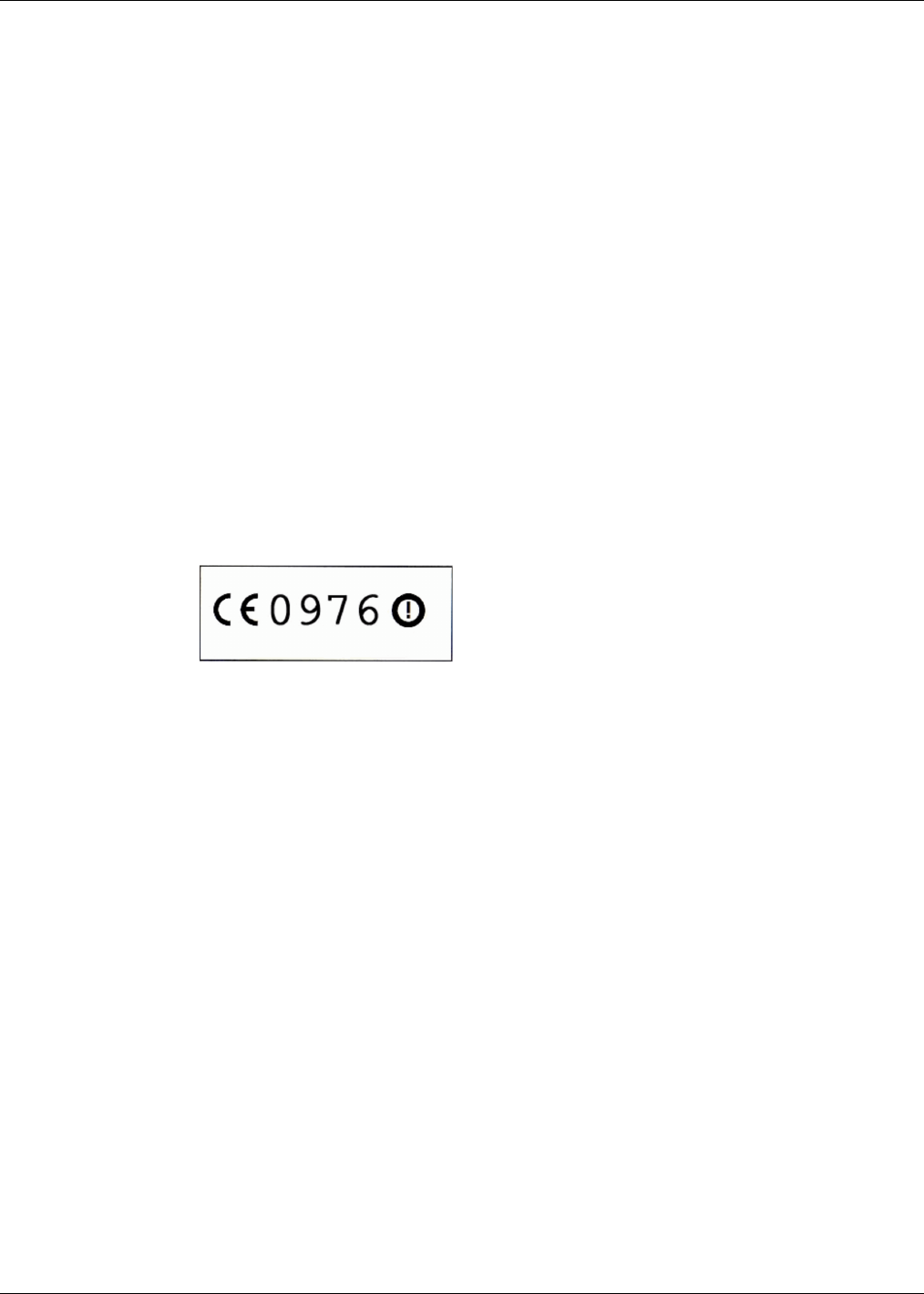
Advanced Information
LM2610 User’s Guide Dust Networks™ 13
6.3 CE Compliance
6.3.1 Declaration of Conformity
The LM2610 will be tested for conformity with the appropriate standards ETSI EN 300 328, ETSI EN 301 489-17 and EN
60950-1, following the provisions of Radio Equipment and Telecommunication Terminal Equipment directive 99/5/EC with
requirements covering EMC directive 89/336/EEC, and low voltage directive 2006/95/EEC.
6.3.2 European Compliance
If the LM2610 manager is incorporated into a product, the manufacturer must ensure compliance of the final product to the
European harmonized EMC and low-voltage/safety standards. A Declaration of Conformity must be issued for each of these
standards and kept on file as described in Annex II of the R&TTE Directive. Furthermore, the manufacturer must maintain a
copy of this LM2610 user documentation and ensure the final product does not exceed the specified power ratings, antenna
specifications, and/or installation requirements as specified in the user manual. If any of these specifications are exceeded in
the final product, a submission must be made to a notified body for compliance testing to all required standards.
6.3.3 OEM Labeling Requirements
The ‘CE’ marking must be affixed to a visible location on the OEM product. The CE mark shall consist of the initials “CE”
taking the following form:
If the CE marking is reduced or enlarged, the proportions given in the drawing below must be respected.
The CE marking must have a height of at least 5 mm except where this is not possible because of the nature of the apparatus.
The CE marking must be affixed visibly, legibly, and indelibly.
Furthermore, since the usage of the 2400 – 2483.5 MHz band is not harmonized throughout Europe, the Restriction sign must
be placed to the right of the ‘CE’ marking as shown below. See the R&TTE Directive, Article 12 and Annex VII for more
information.
Figure 5 CE Label Requirements
6.3.4 Restrictions
Norway prohibits operation near Ny-Alesund in Svalbard. More information can be found at the Norway Posts and
Telecommunications site (www.npt.no).
6.4 RoHS Compliance
Restriction of Hazardous Substances (RoHS) is a directive that places maximum concentration limits on the use of cadmium
(Cd), lead (Pb), hexavalent chromium(Cr+6), mercury (Hg), Polybrominated Biphenyl(PBB) and Polybrominated Diphenyl
Ethers (PBDE). Dust Networks is committed to meeting the requirements of the European Community directive 2002/95/EC.
This product has been specifically designed to utilize RoHS compliant materials and to eliminate, or reduce, the use of
restricted materials to comply with 2002/95/EC.
The Dust Networks RoHS compliant design features include:
• RoHS compliant solder for solder joints
• RoHS compliant base metal alloys
• RoHS compliant precious metal plating
• RoHS compliant cable assemblies and connector choices
6.5 Industrial Environment Operation
The LM2610 is designed to meet the requirements of harsh industrial environments, which includes:
• Shock and Vibration—The LM2610 complies with high vibration pipeline testing, as specified in IEC 60770-1.
• Temperature Extremes—The LM2610 is designed for industrial storage and operational temperature
range of –40 °C to +85 °C.

Advanced Information
14 Dust Networks™ LM2610 User’s Guide
7.0 Related Documentation
• Called out inline as referenced.
8.0 Ordering Information
Product List:
LM2610: TBD
Contact Information:
Dust Networks
30695 Huntwood Ave.
Hayward, CA 94544
Toll-Free Phone: 1 (866) 289-3878
Website: www.dustnetworks.com
Email: sales@dustnetworks.com

Advanced Information
LM2610 User’s Guide Dust Networks™ 15
Trademarks
Dust Networks™, the Dust Networks logo, SmartMesh-XR™, SmartMesh-XD™, SmartMesh IA-510, mesh-to-the-edge™, and Mote-on-Chip™ are
trademarks of Dust Networks, Inc. Dust® and SmartMesh® are registered trademarks of Dust Networks, Inc. All third-party brand and product names are
the trademarks of their respective owners and are used solely for informational purposes.
Copyright
This documentation is protected by United States and international copyright and other intellectual and industrial property laws. It is solely owned by Dust
Networks, Inc. and its licensors and is distributed under a restrictive license. This product, or any portion thereof, may not be used, copied, modified,
reverse assembled, reverse compiled, reverse engineered, distributed, or redistributed in any form by any means without the prior written authorization of
Dust Networks, Inc.
RESTRICTED RIGHTS: Use, duplication, or disclosure by the U.S. Government is subject to restrictions of FAR 52.227-14(g) (2)(6/87) and FAR
52.227-19(6/87), or DFAR 252.227-7015 (b)(6/95) and DFAR 227.7202-3(a), and any and all similar and successor legislation and regulation.
Disclaimer
This documentation is provided “as is” without warranty of any kind, either expressed or implied, including but not limited to, the implied warranties of
merchantability or fitness for a particular purpose.
This documentation might include technical inaccuracies or other errors. Corrections and improvements might be incorporated in new versions of the
documentation.
Dust Networks does not assume any liability arising out of the application or use of any products or services and specifically disclaims any and all
liability, including without limitation consequential or incidental damages.
Dust Networks products are not designed for use in life support appliances, devices, or other systems where malfunction can reasonably be expected to
result in significant personal injury to the user, or as a critical component in any life support device or system whose failure to perform can be reasonably
expected to cause the failure of the life support device or system, or to affect its safety or effectiveness. Dust Networks customers using or selling these
products for use in such applications do so at their own risk and agree to fully indemnify and hold Dust Networks and its officers, employees, subsidiaries,
affiliates, and distributors harmless against all claims, costs, damages, and expenses, and reasonable attorney fees arising out of, directly or indirectly, any
claim of personal injury or death associated with such unintended or unauthorized use, even if such claim alleges that Dust Networks was negligent
regarding the design or manufacture of its products.
Dust Networks reserves the right to make corrections, modifications, enhancements, improvements, and other changes to its products or services at any
time and to discontinue any product or service without notice. Customers should obtain the latest relevant information before placing orders and should
verify that such information is current and complete. All products are sold subject to Dust Network's terms and conditions of sale supplied at the time of
order acknowledgment or sale.
Dust Networks does not warrant or represent that any license, either express or implied, is granted under any Dust Networks patent right, copyright, mask
work right, or other Dust Networks intellectual property right relating to any combination, machine, or process in which Dust Networks products or
services are used. Information published by Dust Networks regarding third-party products or services does not constitute a license from Dust Networks to
use such products or services or a warranty or endorsement thereof. Use of such information may require a license from a third party under the patents or
other intellectual property of the third party, or a license from Dust Networks under the patents or other intellectual property of Dust Networks.
© Dust Networks, Inc., 2008. All Rights Reserved.
Document number: 040-0062 rev 2 LM2610 User’s Guide
Last Revised: September 4, 2008
Document Status Product Status Definition
Advanced
Information
Planned or under
development
This document contains the design specifications for
product development. Dust Networks reserves the right to
change specifications in any manner without notice.
Preliminary
Engineering samples and
pre-production prototypes
This document contains preliminary data; supplementary
data will be published at a later time. Dust Networks
reserves the right to make changes at any time without
notice in order to improve design and supply the best
possible product. The product is not fully qualified at this
point.
No Identification
Noted
Full production
This document contains the final specifications. Dust
Networks reserves the right to make changes at any time
without notice in order to improve design and supply the
best possible product.
Obsolete
Not in production
This document contains specifications for a product that
has been discontinued by Dust Networks. The document is
printed for reference information only.